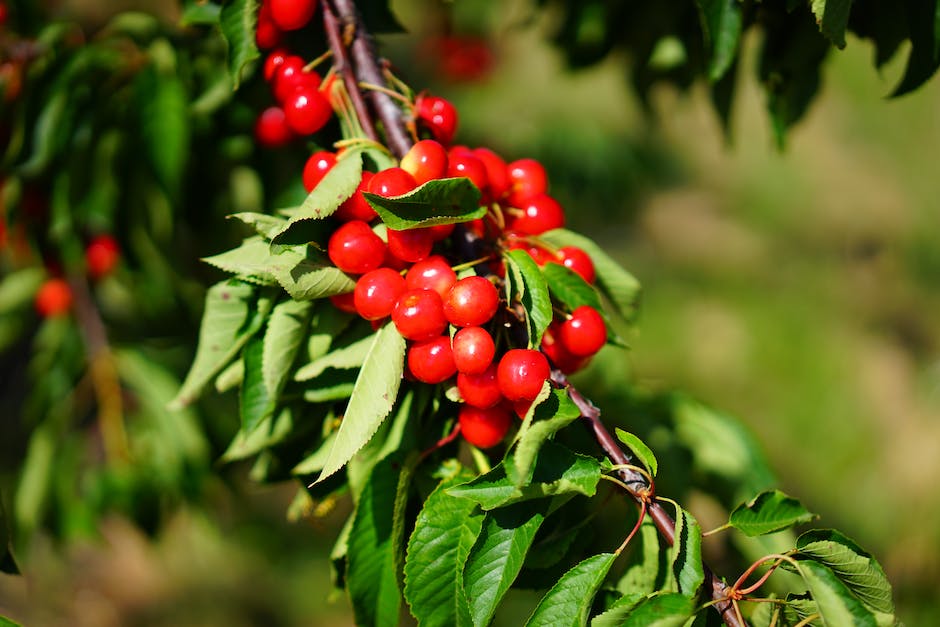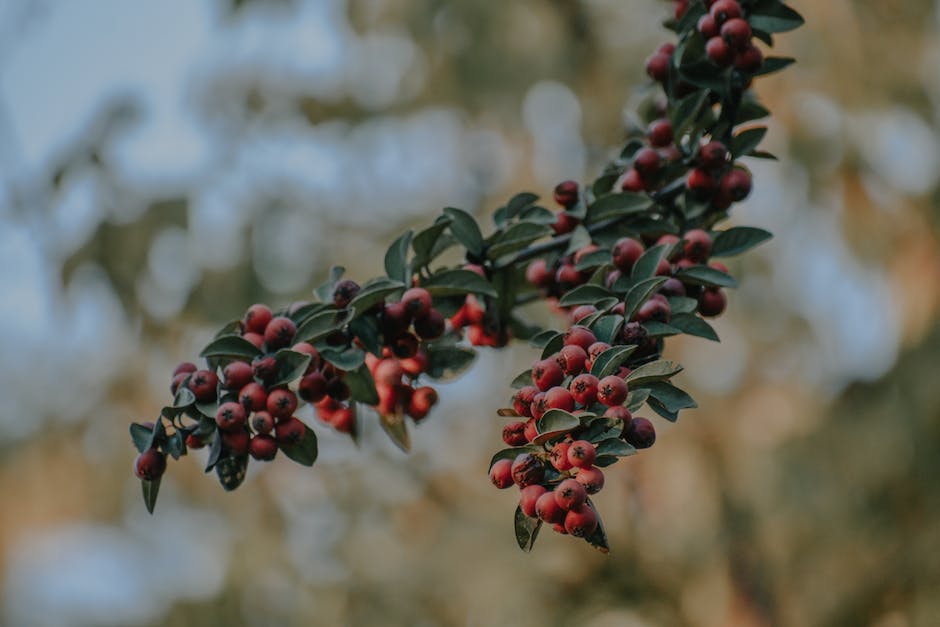Colorful Harvests Every Season: Hydroponic Rainbow Garden
Imagine walking into a garden where vibrant colors overwhelm your senses, and fresh, healthy produce grows all year round. Sounds mesmerizing, doesn’t it? Welcome to the world of hydroponics, where traditional soil-based farming methods are replaced by innovative techniques that yield bountiful and vibrant harvests.
Hydroponics, derived from the Latin words “hydro” (water) and “ponos” (labor), is a method of growing plants without soil. Instead, nutrients essential for plant growth are dissolved in water, providing a perfect balance of essential elements. This technique allows for consistent harvests and eliminates the need for extensive land use, making it an ideal solution for urban areas or regions with limited agricultural space.
One of the most fascinating aspects of hydroponics is the incredible range of colorful produce that can be grown. From luscious red tomatoes and radiant orange bell peppers to vibrant green lettuce and deep purple eggplants, a hydroponic rainbow garden is a visual delight. By providing the necessary nutrients directly to the plants’ root systems, hydroponics allows vegetables and fruits to reach their full potential, both in terms of flavor and appearance.
The controlled and optimized environment of hydroponics enhances the growth process, resulting in quicker development and higher yields. By eliminating the challenges posed by soil-borne diseases, pests, and adverse weather conditions, hydroponics provides a consistent and reliable source of fresh produce throughout the year. Whether it’s the middle of winter or the height of summer, hydroponic farmers can enjoy a technicolor harvest at any time.
Not only does hydroponics offer an impressive array of colorful produce, but it also presents unique opportunities for sustainable and efficient farming practices. By utilizing vertical farming methods and optimizing resource usage, hydroponics minimizes water consumption, eliminates soil erosion, and reduces pesticide reliance. With the ever-growing focus on sustainable and eco-friendly practices, hydroponics is at the forefront of a greener agricultural revolution.
In the following sections of this blog post, we will explore the various techniques and systems that make hydroponics possible, delve into the benefits it provides to both farmers and consumers, and discuss how you can incorporate hydroponically grown produce into your life. Get ready to be amazed by the amazing world of hydroponics and its colorful harvests that flourish in every season.
– Briefly explain the concept of hydroponic gardening

Hydroponic gardening has emerged as a cutting-edge method of growing crops, revolutionizing traditional agricultural practices. Unlike conventional soil-based gardening, hydroponic gardening involves cultivating plants without the use of soil. Instead, nutrient-rich water solutions deliver essential minerals directly to the plant’s roots, promoting faster growth and higher yields.
This innovative method of farming has gained popularity due to its numerous advantages. One of the primary benefits of hydroponic gardening is its ability to provide a more controlled and optimal growing environment. With all the necessary nutrients readily available in the water, plants can focus their energy on root development and overall growth, resulting in robust and healthy crops.
Another key advantage of hydroponic gardening is its efficient use of resources. By eliminating the need for soil, the method saves space and reduces water consumption significantly. Hydroponic systems generally consume up to 90% less water compared to traditional agriculture, making it a sustainable choice for growing food in regions facing water scarcity.
Furthermore, hydroponic gardening allows for year-round cultivation, as it is independent of seasons and climate conditions. By ensuring a controlled environment with adequate lighting, temperature, and humidity, farmers can create an optimal setting for plants to thrive at any time of the year. This advantage not only allows for consistent and reliable harvests, but it also makes hydroponic gardening an attractive option for urban areas where space constraints are prominent.
The versatility of the hydroponic method also opens up possibilities for growing a wide variety of crops, including leafy greens, herbs, fruits, and flowers. With the ability to control nutrient composition and optimize growing conditions, hydroponic gardens can yield vibrant and nutrient-rich produce throughout the year. From deep green lettuce to succulent strawberries, hydroponic gardening offers a rainbow of harvests regardless of the external environment.
As more individuals and businesses recognize the potential of hydroponic gardening, its popularity continues to soar. The flexibility, efficiency, and sustainability it provides make it an ideal choice for those seeking high-quality, fresh produce regardless of seasonal limitations. With hydroponics, the future of farming is not only colorful but also innovative and environmentally conscious.
– Highlight the benefits of having a hydroponic rainbow garden
Having a hydroponic rainbow garden offers numerous benefits that can enhance both the aesthetic appeal and productivity of your business. With this innovative gardening method, you can enjoy colorful harvests all year round, bringing vibrancy and freshness to your workspace or establishment.
One of the main advantages of a hydroponic rainbow garden is its ability to grow a wide variety of plants in various colors. Unlike traditional soil-based gardening, hydroponics allows you to cultivate plants in a controlled environment, providing the perfect conditions for each species to thrive. This means that you can grow a diverse range of vibrant fruits and vegetables, such as strawberries, tomatoes, lettuce, peppers, and even edible flowers all within the same garden.
The colorful nature of a hydroponic rainbow garden not only makes it visually appealing but can also be a great marketing tool for your business. Imagine showcasing your harvests to potential clients or customers, with an array of vibrant produce on display. It can create a positive and memorable impression, setting your business apart from competitors and conveying a sense of freshness and quality.
Moreover, hydroponic systems are incredibly efficient in terms of resource utilization. By eliminating the need for soil, these gardens use less water compared to traditional methods. The water used in hydroponics is recirculated, ensuring minimal wastage and reducing your overall water consumption. Additionally, the controlled environment allows for optimal nutrient uptake, leading to healthier and more productive plants.
Another noteworthy benefit of a hydroponic rainbow garden is its versatility in terms of space requirements. These systems can be customized to fit any available space, whether you have a small balcony, rooftop, or even a dedicated indoor area. This flexibility makes it accessible to businesses of all sizes, ensuring everyone can enjoy the benefits of this innovative gardening method.
In conclusion, a hydroponic rainbow garden offers an array of benefits that can elevate your business’s visual appeal, marketability, and environmental sustainability. The ability to grow a wide variety of colorful plants in a controlled environment, coupled with efficient resource utilization, makes it an attractive option for businesses seeking a professional and eco-friendly branding. Consider incorporating this innovative gardening method into your business to enjoy colorful and bountiful harvests every season.
What is a hydroponic garden?

A hydroponic garden is a fascinating and innovative method of growing plants without soil. Instead of relying on traditional soil-based cultivation, this technique involves the use of a nutrient-rich water solution to provide all the necessary elements for plant growth. By carefully controlling variables such as pH levels, lighting conditions, and nutrient concentration, hydroponic systems offer an efficient and sustainable way to produce a wide range of crops.
Unlike traditional farming practices, hydroponics eliminates the need for soil preparation, thereby saving both time and labor. This method allows plants to grow in a soilless environment, with their roots directly immersed in the nutrient solution or supported using inert growing media like perlite or coco coir. The absence of soil not only reduces the risk of disease and pests but also optimizes nutrient absorption, enabling plants to grow faster and healthier.
One of the significant advantages of hydroponic gardening is the ability to grow plants in any location, regardless of climate or seasonal limitations. Through the efficient use of artificial lighting systems, hydroponics enables year-round cultivation, ensuring a continuous supply of fresh and flavorful produce. This flexibility makes hydroponics particularly popular in urban areas, where space constraints and limited access to arable land often pose a challenge to traditional agriculture.
Furthermore, hydroponic systems promote water conservation by utilizing a closed-loop system that recirculates and reuses the nutrient solution. As a result, water consumption is significantly lower compared to conventional farming practices, addressing the growing concerns related to scarcity and conservation of this vital resource.
In addition to its environmental benefits, hydroponics also offers scalability and maximized crop yields. By controlling all aspects of the growing environment, farmers can tailor the conditions to suit specific plant varieties, resulting in accelerated growth and significantly higher harvests compared to traditional methods. This increased productivity combined with lower operational costs makes hydroponic farming an attractive option for both large-scale commercial operations and small-scale home gardens.
In conclusion, hydroponic gardening is an exciting and efficient technique that has revolutionized the way we grow plants. By providing an alternative to traditional soil-based cultivation, hydroponics offers numerous advantages such as year-round cultivation, water conservation, and increased crop yields. Whether you are a commercial farmer looking to optimize production or an urban dweller wanting to enjoy fresh, homegrown produce, hydroponics presents a colorful and sustainable solution for your gardening needs.
– Define hydroponics and its basic principles

Hydroponics, a cutting-edge gardening method, is rapidly gaining popularity among gardening enthusiasts and commercial producers alike. Derived from the Greek words “hydro” meaning water, and “ponos” meaning labor, hydroponics essentially refers to the practice of growing plants without the use of soil. Instead, nutrient-rich water solutions provide the necessary sustenance for plants to thrive.
The basic principles of hydroponics revolve around creating an optimized environment for plant growth. Unlike traditional gardening, where soil acts as a reservoir for nutrients, hydroponics utilizes a solution containing a balanced mix of essential elements such as nitrogen, phosphorus, and potassium, among others.
In this system, plants are often grown in a controlled environment, such as a greenhouse or an indoor facility, allowing for year-round cultivation. The plants are placed in various types of growing media, including perlite, coconut coir, or even simply suspended in water.
One of the key advantages of hydroponics is its ability to maximize water efficiency. Without the need for soil, water is efficiently delivered directly to the roots of the plants, eliminating wastage through evaporation or drainage. Additionally, hydroponic systems can utilize up to 90% less water compared to traditional soil-based gardening methods.
Another significant benefit of hydroponics is that it provides plants with a consistent and balanced supply of nutrients. Unlike in soil-based gardening, where nutrients can sometimes be irregularly distributed, hydroponic systems ensure that plants receive the necessary elements in the correct proportions, leading to healthier and more vigorous growth.
Furthermore, hydroponics allows for precise control over environmental factors such as temperature, humidity, and lighting, which enables plants to reach their optimal growth potential. By manipulating these variables, hydroponics offers a unique advantage for cultivating crops that are out of season or not native to the local climate.
As hydroponic systems continue to evolve, innovative techniques such as vertical farming and aquaponics have emerged, further expanding the possibilities of this sustainable and efficient gardening method.
In conclusion, hydroponics is a revolutionary technique that has revolutionized the way we grow plants. By providing plants with a controlled and optimized environment, this method offers numerous advantages, including increased water efficiency, precise nutrient delivery, and the ability to cultivate crops regardless of the season. Whether you are a gardening enthusiast or a commercial producer, exploring the colorful harvests of a hydroponic rainbow garden is undoubtedly an exciting endeavor.
– Discuss how plants grow in a hydroponic system without soil

Hydroponic gardening is revolutionizing the way we grow plants. Unlike traditional soil-based gardening, hydroponics allows for plants to thrive without the need for soil. This innovative system uses a nutrient-rich water solution to deliver essential minerals and elements directly to the plant roots, resulting in faster growth and higher yields.
One of the key benefits of hydroponics is the precise control it provides over the growing environment. By eliminating the reliance on soil, gardeners can finely tune the water pH levels, nutrient concentrations, and even the lighting and temperature conditions. This control translates into a more efficient and productive gardening experience.
Additionally, growing plants hydroponically offers several advantages in terms of space utilization. As plants don’t require extensive root systems to search for nutrients in soil, they can be placed much closer together, maximizing cultivation density. This allows for increased yields per square foot of growing space, making hydroponics an ideal solution for urban gardening or limited space scenarios.
Another major benefit of hydroponics is the ability to grow plants throughout the year, regardless of the external season. By recreating the optimal growing conditions indoors, gardeners can ensure a consistent and uninterrupted harvest. For businesses that rely on fresh produce or botanical products, this can be a game-changer, as it eliminates the dependency on seasonal availability and enables a year-round supply.
Hydroponic gardens also offer an added layer of control to combat pests and diseases. Without the introduction of soil, many common soil-borne pests and pathogens become less of a concern. This reduces the need for chemical pesticides or fungicides, aligning with the increasing demand for organic and sustainable growing practices.
In conclusion, hydroponics provides a compelling solution for those looking to cultivate plants in a professional and efficient manner. By harnessing the power of nutrient-rich water solutions, precise environmental control, and space optimization, hydroponics unlocks a world of possibilities for year-round, high-quality harvests. Whether you’re a business owner, a hobbyist gardener, or simply curious about sustainable agriculture practices, exploring the world of hydroponics is sure to leave you amazed by the colorful abundance it can offer.
Why choose a hydroponic rainbow garden?

Hydroponic gardening is a revolutionary method of growing plants without the use of soil. But why should you choose a hydroponic rainbow garden? Well, there are several compelling reasons that make this innovative approach to gardening stand out.
First and foremost, a hydroponic rainbow garden offers unparalleled control over the growing environment. With traditional soil-based gardening, you are at the mercy of factors like weather and soil quality. However, in a hydroponic system, you have full control over variables such as temperature, light, and nutrient levels. This precision allows you to create an optimal environment for your plants, ensuring their success and maximizing their growth potential.
Another advantage of hydroponic gardening is its water efficiency. Compared to traditional gardening methods, hydroponics uses significantly less water. In a world facing water scarcity issues, this is a crucial consideration. The hydroponic system recirculates water and nutrients, minimizing wastage and making it a sustainable choice for eco-conscious individuals. Additionally, the controlled environment of a hydroponic rainbow garden allows you to conserve water by avoiding evaporation or runoff common in traditional gardening.
One of the key benefits that sets hydroponic rainbow gardens apart is their ability to yield a diverse range of colorful produce consistently throughout the year. Without the constraints of seasons and weather conditions, you can enjoy a vibrant array of fruits, vegetables, and herbs regardless of the calendar. Imagine harvesting bright red tomatoes, vibrant green lettuce, and vibrant orange bell peppers, all grown in your very own garden, no matter the season.
Furthermore, hydroponic rainbow gardens can be a great solution for those with limited space. Whether you live in an apartment, have a small backyard, or even want to grow plants indoors, hydroponics offers flexibility and adaptability. By utilizing vertical systems or stacking growing trays, you can maximize your growing area and cultivate a bountiful variety of crops within a limited footprint.
Last but certainly not least, a hydroponic rainbow garden can be a stylish and aesthetically pleasing addition to your home or workspace. The sleek and modern design of hydroponic systems, often incorporating LED grow lights and clean lines, adds a touch of sophistication to any setting. It allows you to have a beautiful garden that complements the professional and modern aesthetic of your space.
In conclusion, choosing a hydroponic rainbow garden brings numerous benefits to the table. From the complete control over the growing environment, water efficiency, year-round harvests of colorful produce, space-saving potential, and the stylish appeal, hydroponics is the ultimate solution for those looking to cultivate a vibrant, sustainable, and professional garden.
– Emphasize the variety of colors and flavors achievable in a hydroponic garden

In a traditional outdoor garden, the availability of colorful fruits and vegetables may be limited to certain seasons. However, in a hydroponic garden, the possibilities are endless. One of the major advantages of hydroponics is the ability to cultivate a diverse range of vibrant and flavorful produce throughout the year.
By leveraging hydroponic systems, gardeners can grow a kaleidoscope of fruits, vegetables, and herbs that vary not only in taste but also in hues. From deep purple eggplants and fiery red tomatoes to golden yellow peppers and leafy greens in every shade, hydroponics offers a rainbow of options to satisfy both the palate and the eye.
Through careful nutrient management and strategic lighting, hydroponic gardens provide plants with the ideal growing conditions, ensuring optimal growth and color development. This controlled environment enables the production of produce that is consistent in quality and appearance regardless of the season.
Not only do these vibrant creations add visual appeal to a plate, but they are also rich in nutrients, bursting with flavors that are often intensified by the hydroponic cultivation process. The fruits and vegetables grown hydroponically are known to be crisper, juicier, and more succulent, making them a chef’s delight.
Imagine the delight of harvesting a medley of colorful bell peppers, including red, orange, yellow, and even purple varieties, or plucking a handful of cherry tomatoes in various shades of red, green, and yellow. The possibilities are as diverse as the colors themselves, and the satisfaction of creating a visually stunning dish using produce straight from your hydroponic garden is unmatched.
Furthermore, the availability of such a colorful and flavorful harvest throughout the year opens up numerous opportunities for culinary experimentation and creativity. From vibrant salads to artistically plated desserts, the variety of produce from a hydroponic garden allows individuals to elevate their culinary endeavors and create visually appealing, healthy, and delicious meals every season.
In conclusion, hydroponic gardening is an excellent option for those seeking a visually stunning, flavorful, and sustainable approach to growing an array of colorful fruits, vegetables, and herbs. With a hydroponic system, you can unlock a world of possibilities that will not only satisfy your taste buds but also satisfy your desire for a beautiful, diverse, and ever-changing garden.
– Discuss the potential for year-round harvests

Hydroponic systems have revolutionized the way we approach gardening, offering an exciting possibility for year-round harvests. Traditional gardening methods often limit us to only certain seasons or climates, making it difficult to grow and enjoy fresh produce throughout the year. However, with hydroponics, we can harness the power of technology and create an environment that cultivates colorful, nutrient-rich harvests every season.
One of the key advantages of hydroponics is the ability to control and optimize each aspect of plant growth. By providing the perfect combination of water, nutrients, and light, hydroponic systems create a stable and balanced environment for plants to thrive. Without the limitations of soil, hydroponics allows us to grow plants in a controlled indoor setting, irrespective of the external weather conditions.
With hydroponics, the possibilities are endless. You can cultivate a wide variety of fruits, vegetables, and herbs regardless of their typical seasonality. Imagine enjoying vibrant tomatoes, crisp lettuce, and fragrant basil all year long. By replicating the ideal growing conditions for each plant, hydroponics ensures a bountiful harvest anytime you desire, irrespective of the external factors.
Moreover, hydroponic systems enable us to grow plants faster and more efficiently. The controlled environment eliminates the need for excessive water usage and significantly reduces the risk of pests and diseases commonly found in traditional soil-based gardens. With precise nutrient delivery and optimized light exposure, hydroponics promotes rapid plant growth, meaning you can enjoy your harvests in a shorter amount of time.
Another advantage of hydroponics is the conservation of resources. By growing plants in a soil-less system, we can reduce water usage by up to 90% compared to traditional gardening methods. Additionally, since hydroponics eliminates the need for pesticides and herbicides, it promotes environmentally friendly cultivation, ensuring that the produce you harvest is healthy and free from harmful chemicals.
In conclusion, hydroponic systems offer a remarkable opportunity for year-round harvests. By harnessing technology and providing an optimal growth environment, we can enjoy colorful and nutritious produce regardless of the season. The ability to grow a wide variety of plants efficiently while conserving resources makes hydroponics a sustainable and exciting option for any aspiring gardener or small-scale farmer. So, get ready to embrace the joy of a hydroponic rainbow garden and savor the delight of fresh harvests every season.

